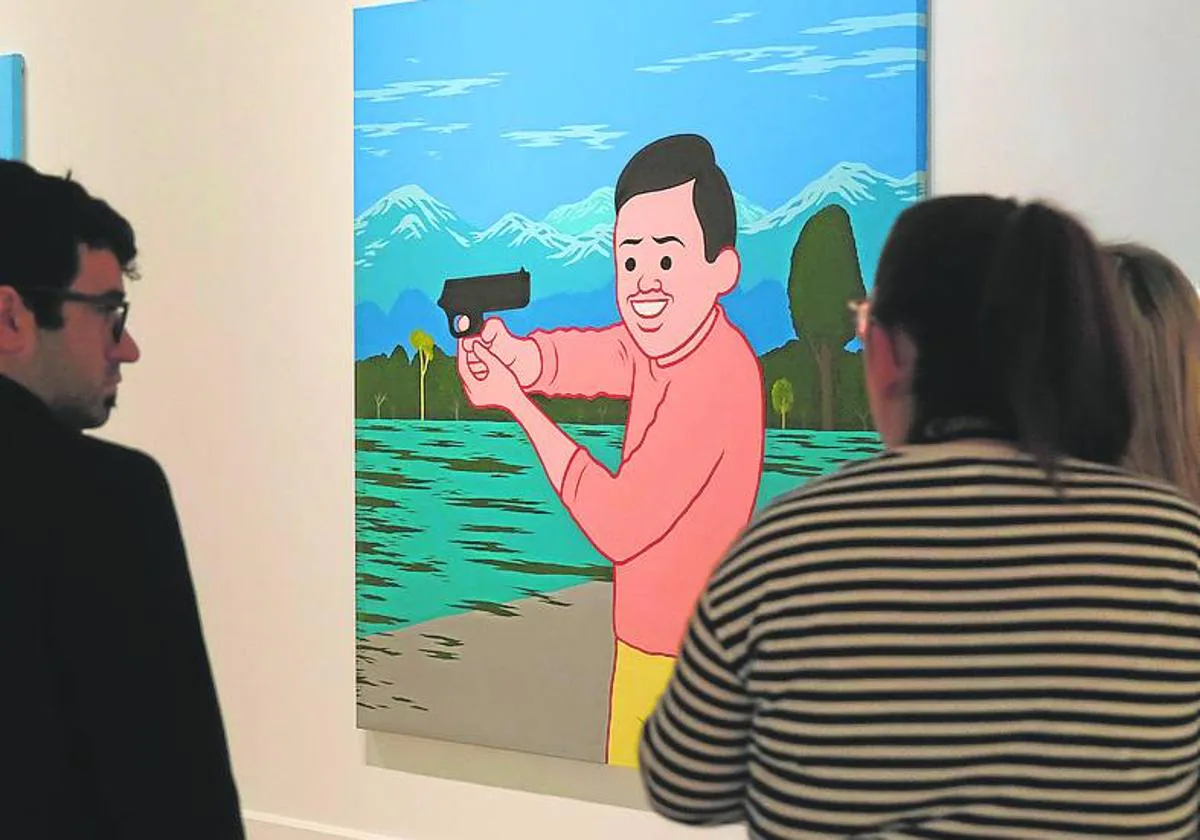Joan Cornellà raises uncomfortable smiles at the CAC Malaga
The Catalan illustrator and cartoonist's black humour and sense of the absurd is being shown for the first time in a European museum
Regina Sotorrío
Malaga
Viernes, 24 de marzo 2023
They are extreme scenes, impossible and almost surrealist. They show situations in which you know you shouldn't laugh because of their harsh content but can't help doing so, so you sort of grimace slightly, with a half-smile, knowing that is not the appropriate thing to do.
Joan Cornellà brings an uncomfortable smile to the face at the CAC Malaga, with a black humour and sense of the absurd that reveal "the sober side of human nature," he says.
The Catalonian illustrator and cartoonist's first exhibition in Europe has just opened and it is the most complete so far, with 150 of his works. He, however, was not here for the inauguration. He has been living in Hong Kong for some time now, and has decided to reduce his media exposure to the minimum.
They are mini-stories which need to be seen rather than told, or nuance would be lost and they would become subjective
Cornellà prefers his works to speak on his behalf, and they show him as someone concerned about the "anxiety" of this "maladjusted" contemporary life , where there is extreme violence, rapes, addictions, racism and weapons. A world dominated by appearances and the power of the image imposed by social media, where others don't matter and the main thing is that the individual in question is doing well. He reflects this in a series of cartoons without words, just drawings that build disturbing and bizarre stories. A slap in the face by black - very black - humour, to reflect on all that lies behind it.
The title of the exhibition is 'Dek Tau' and, although it may not seem so, it is very explicit: 'dek' means ten in Esperanto and 'tau' means years in Maori. This is Joan Cornellà reviewing the last ten years of his works, from 2012, a year which marked a turning point in his career. Before that, he was a young comic artist who worked with magazines such as El Jueves, with its black and white format and grotesque language.
Formal change
After that came a formal change: he abandoned text in favour of a more visual, simple and direct language. He expanded his palette with flat, basic colours reminiscent of 1950s advertising and incorporated a generic character with an expressionless style who faces all types of exaggerated, sometimes impossible, situations.
A girl with a self-defence spray turns it on herself and, in the same way, the attacker stabs himself with the knife. A couple have a car accident, one of them dies and the other digs a hole and ends up burying the vehicle in it. They are mini-stories which need to be seen rather than told, because the explanation would lose nuance and become subjective. Also, there are multiple interpretations.
The display includes dozens of original drawings - the main body of the show - and 16 oil paintings on canvas from the past two years. 'Don't water me, I'm fake like you' can be seen on a flowerpot which one of his characters is approaching. In another, a couple raise their glasses in a toast while a mushroom cloud which is so typical of atomic explosions rises behind them.
As Helena Juncosa, the curator of the exhibition together with Fernando Francés, explained, all the works have tinges of the absurd and aim to help people "understand the world through humour". Joan Cornellà's works will be raising those uncomfortable and inappropriate smiles at the CAC until 4 June.

Malaga graffiti artist Imon Boy's first exhibition in a museum
As well as Cornellà, the CAC has made space for local urban art in a small room with ten works on display by Imon Boy. This artist whose graffiti often appears on walls in Malaga is exhibiting in a museum for the first time with a show called El Principio de Algo, but he wasn't at the opening either: he prefers to remain anonymous because he still paints out in the streets illegally. However, this exhibition gives some clues about him: he likes animation, video games, cinema and travelling. He does not pursue direct social criticism; what interests him is everyday life, the things that happen every day. In fact, he says his painting "is a diary". Here we also see his main sign of identity: his signature upon a wall that he has painted from top to bottom. His works can be seen until 4 June.
